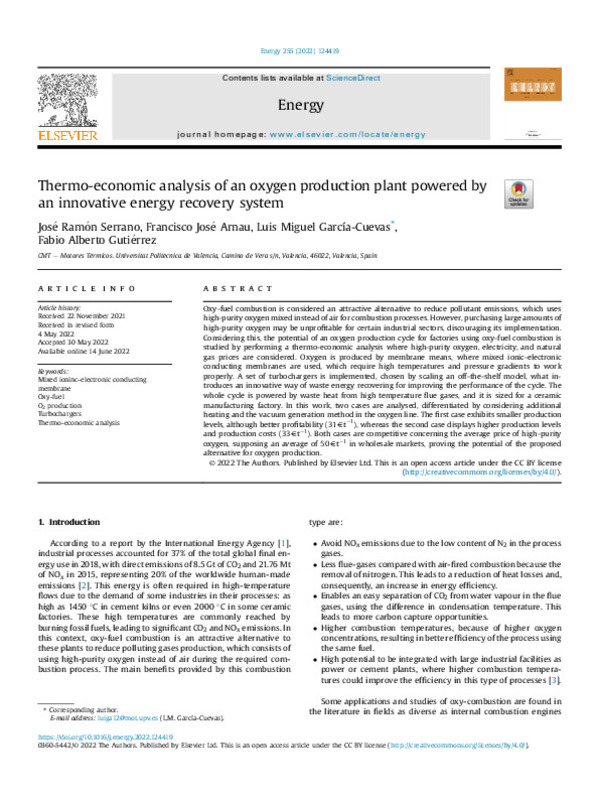JavaScript is disabled for your browser. Some features of this site may not work without it.
Buscar en RiuNet
Listar
Mi cuenta
Estadísticas
Ayuda RiuNet
Admin. UPV
Thermo-economic analysis of an oxygen production plant powered by an innovative energy recovery system
Mostrar el registro completo del ítem
Serrano, J.; Arnau Martínez, FJ.; García-Cuevas González, LM.; Gutierrez, FA. (2022). Thermo-economic analysis of an oxygen production plant powered by an innovative energy recovery system. Energy. 255:1-18. https://doi.org/10.1016/j.energy.2022.124419
Por favor, use este identificador para citar o enlazar este ítem: http://hdl.handle.net/10251/193712
Ficheros en el ítem
Metadatos del ítem
| Título: | Thermo-economic analysis of an oxygen production plant powered by an innovative energy recovery system | |
| Autor: | ||
| Entidad UPV: |
|
|
| Fecha difusión: |
|
|
| Resumen: |
[EN] Oxy-fuel combustion is considered an attractive alternative to reduce pollutant emissions, which uses high-purity oxygen mixed instead of air for combustion processes. However, purchasing large amounts of high-purity ...[+]
|
|
| Palabras clave: |
|
|
| Derechos de uso: | Reconocimiento (by) | |
| Fuente: |
|
|
| DOI: |
|
|
| Editorial: |
|
|
| Versión del editor: | https://doi.org/10.1016/j.energy.2022.124419 | |
| Código del Proyecto: |
|
|
| Agradecimientos: |
This research work has been supported by Grant PDC2021120821-I00 funded by MCIN/AEI/10.13039/501100011033 and by European Union NextGenerationEU/PRTR. This work has also been supported by Grant UPV-SOLGEN-79674 funded by ...[+]
|
|
| Tipo: |
|









